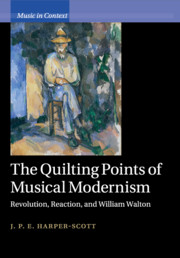Book contents
3 - The love of Troilus and Cressida
from PART II - RELATIONSHIP PROBLEMS
Published online by Cambridge University Press: 05 September 2012
Summary
Troilus and Cressida never began to be great tragic lovers like Tristan and Isolde, nor like Radames and Aida […] Troilus is no heroic figure – only a ‘wimp’ would, at the end of Act II, so feebly consent to Cressida's exchange: ‘We cannot, dare not disobey.’
The plot
From the perspective proposed in this Part, love – and now this means the potentially universalizable love of Troilus and Cressida – has a specific and important relation to truth. ‘Love’, Badiou writes, ‘is an enquiry of the world from the point of view of the Two, and not an enquiry of each term of the Two about the other.’ It is a love of two people who ‘do not look into each other's eyes; they look together outwards, to some third point, their common Cause’. The world into which Walton's Two enquires is, I suggest, the world of modernity whose Real kernel is capitalism, and in which the profanation of lovers' commodity forms is both a pressing need in its own terms and a glimpse of a possible broader political change. Teir Cause, I shall argue, is for the general emancipation of women and men from the ideological pressures of sexual interpellation. And the truth they propose on the basis of the suppressed third term of betrayal is staggering.
The plot of Walton's opera, which with the aid of his librettist Hassall was assembled from Chaucer's long narrative poem, Troilus and Criseyde (and not from Shakespeare's altogether different play), with some telling additions (principally a scarf, for which the inspiration was probably the sleeve in the play), is fairly straightforward.
- Type
- Chapter
- Information
- The Quilting Points of Musical ModernismRevolution, Reaction, and William Walton, pp. 81 - 146Publisher: Cambridge University PressPrint publication year: 2012



